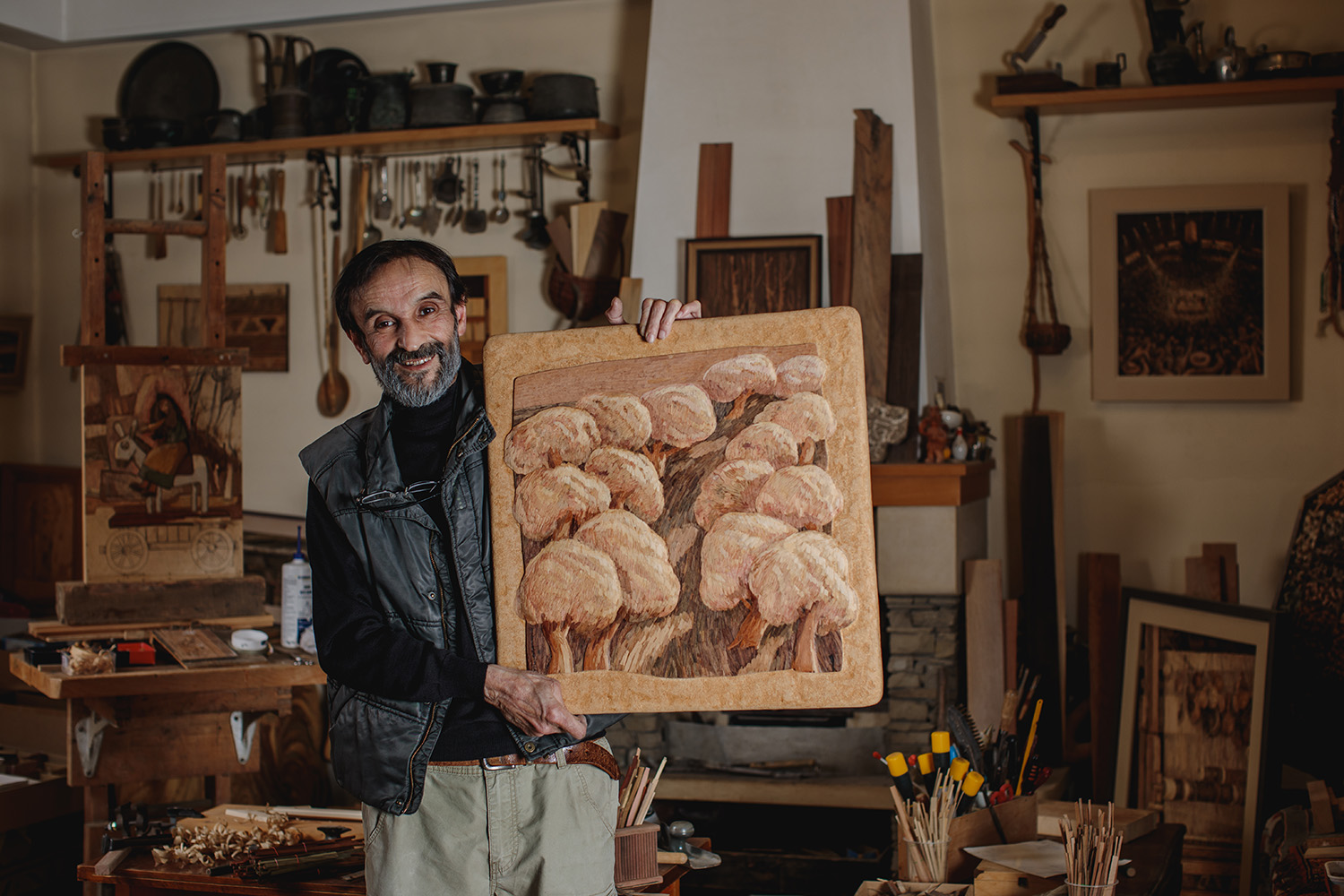
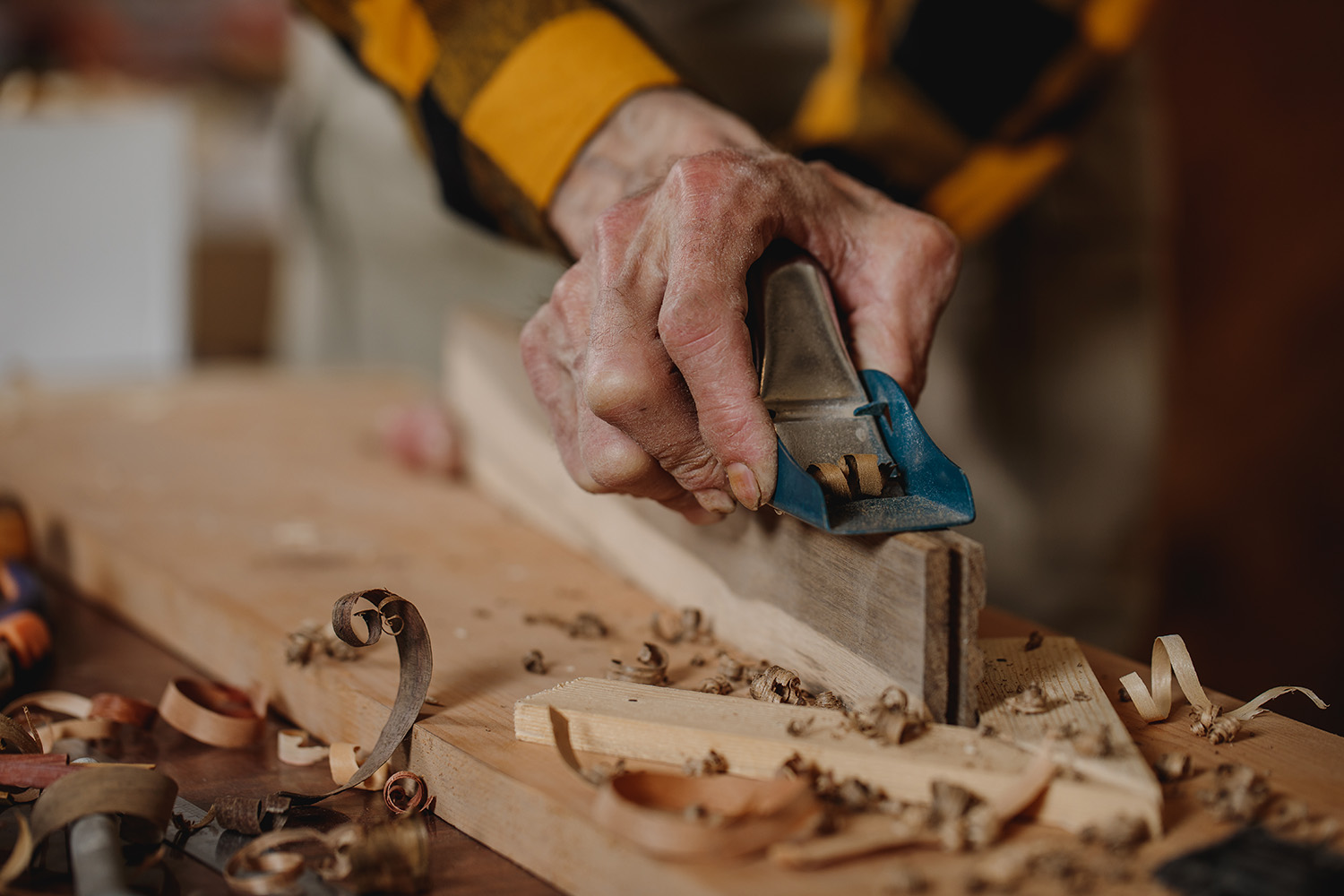
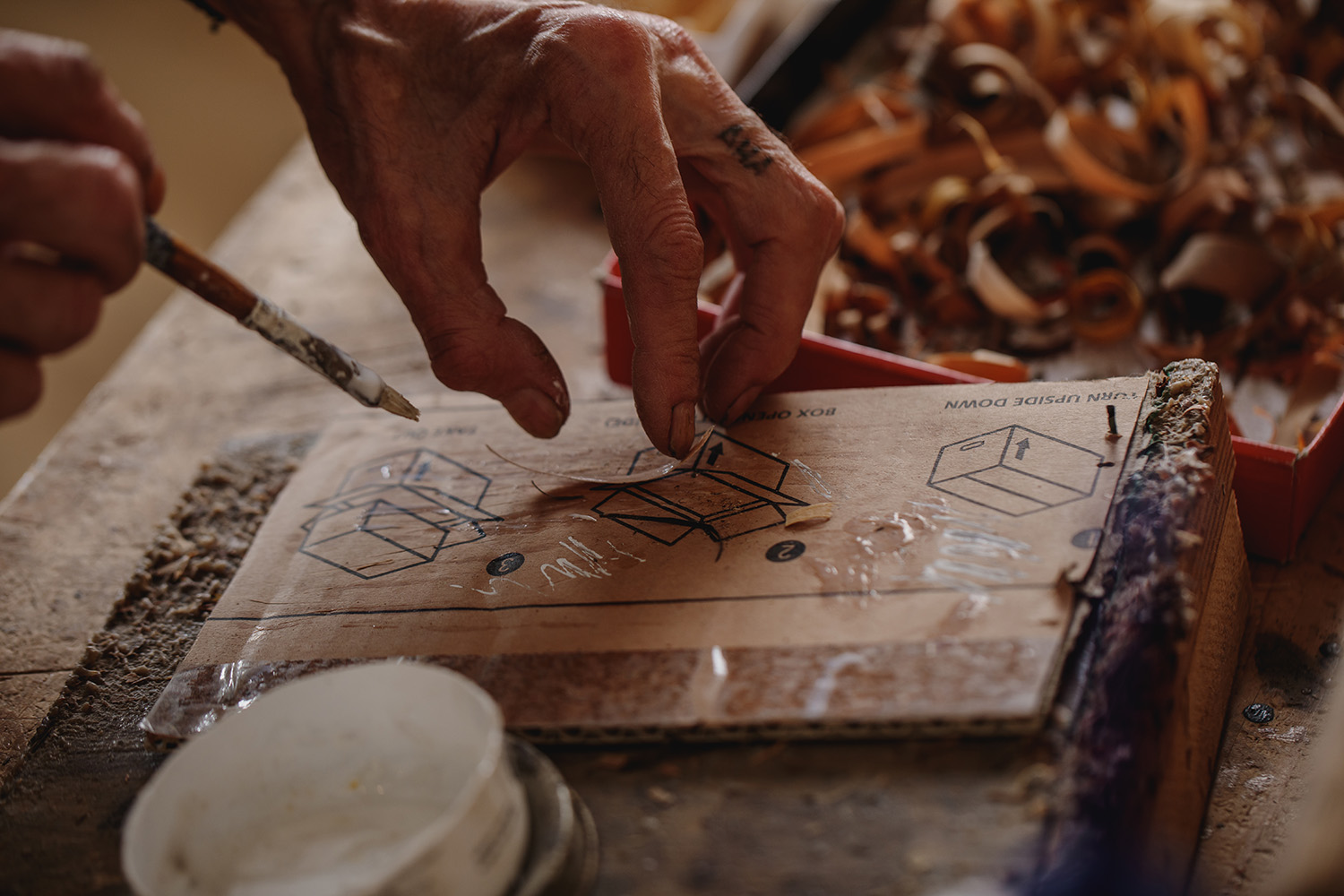
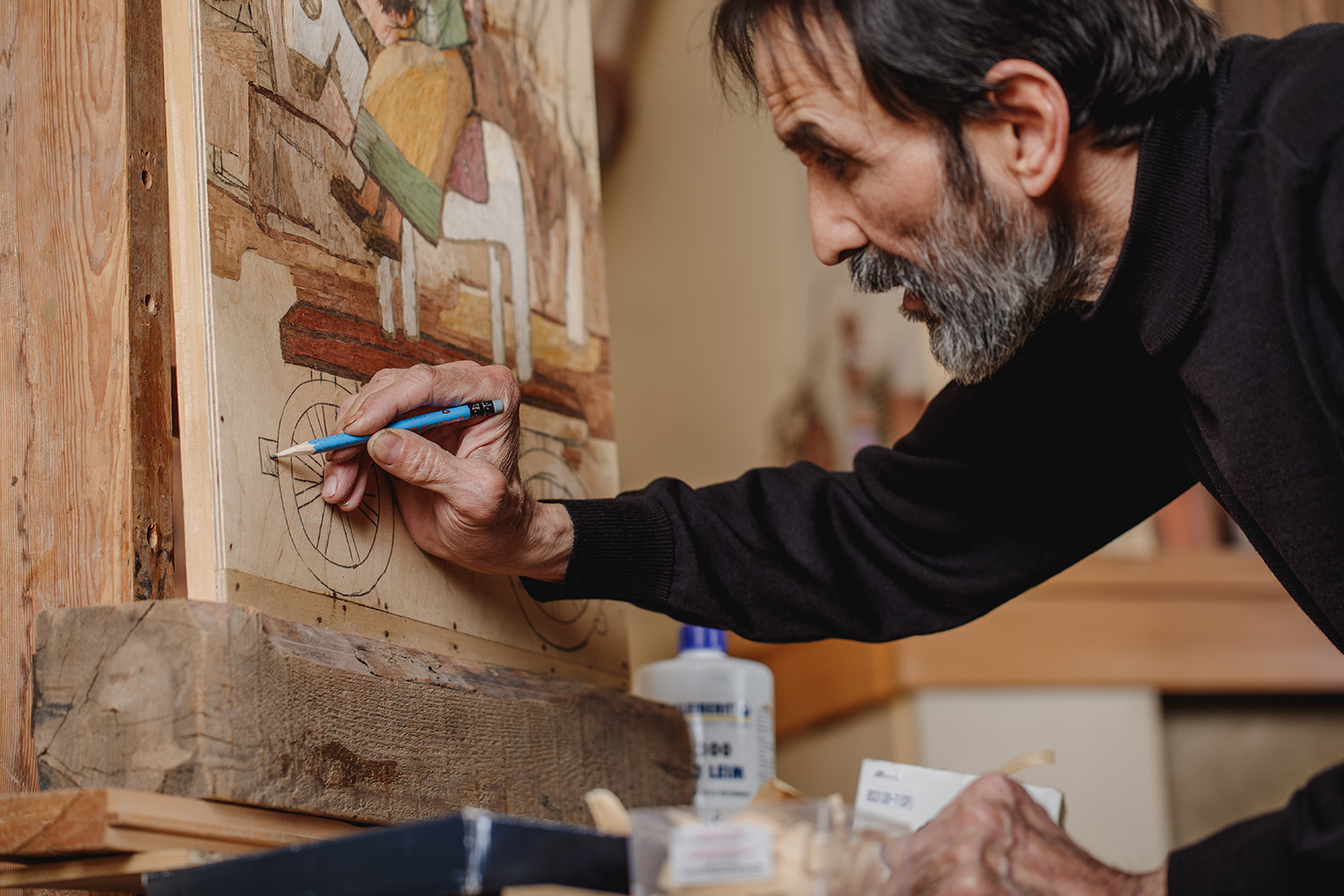






When Jabrail Quliyev went to visit the workshop of his carpenter friends in Russia, he encountered trees and wood types that were unfamiliar to the Caucasus region. This trip inspired him to explore the craft of intarsia and wood marquetry that originated in the Middle Ages, whereby a picture is created by inlaying different pieces of wood to create variations in colour and relief. Each composition begins with Jabrail finding a mark, or stain, on a wooden board and using it as an integral shape in his picture, kick-starting the piece. He recalls that learning this craft felt like learning the alphabet, since every type of wood, tree, colour combination and composition knack was utterly new to him. Jabrail had studied painting and sculpture prior to intarsia and this helped him with colour coding and relief techniques, resulting in the creation of exceptional marquetry landscapes.
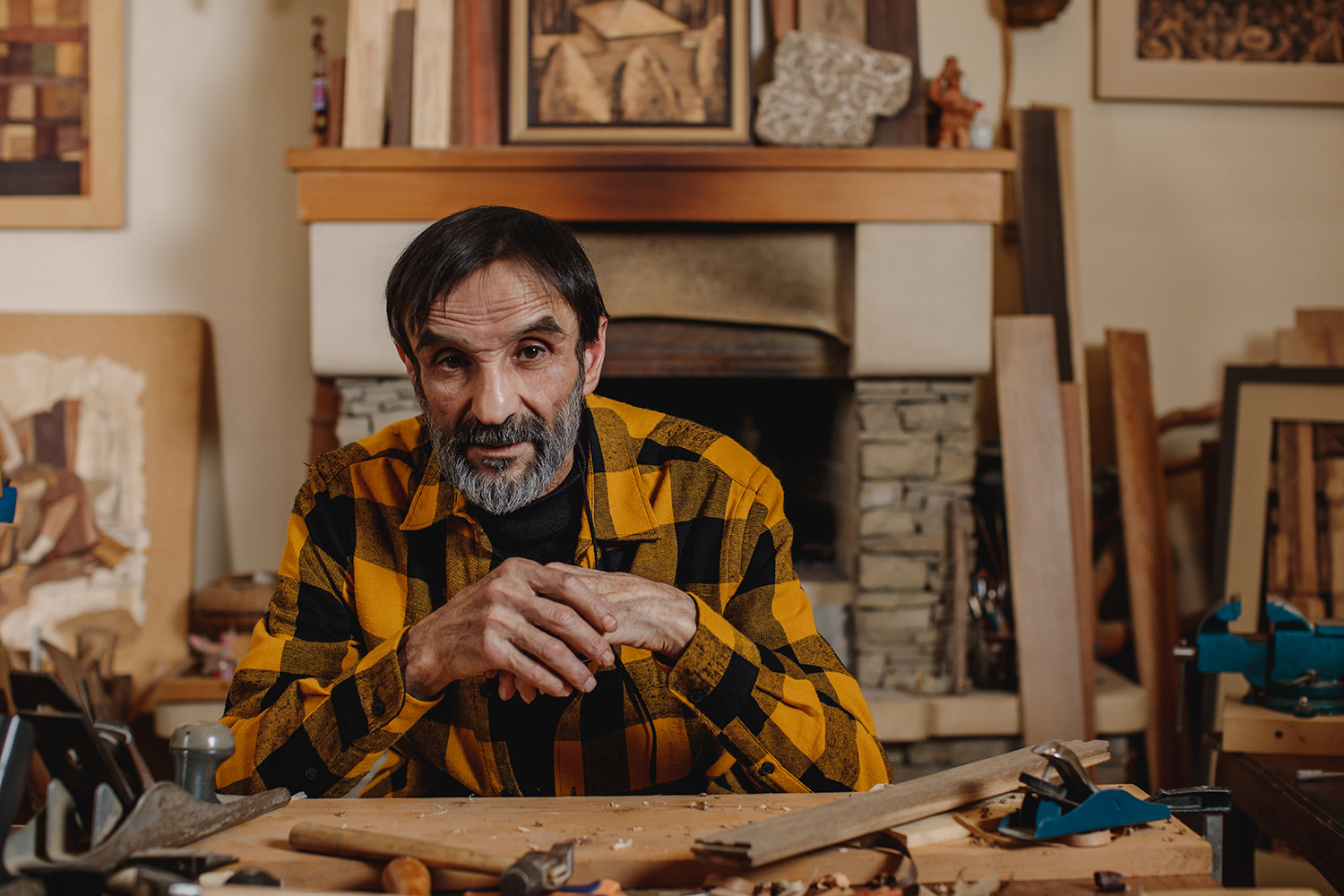
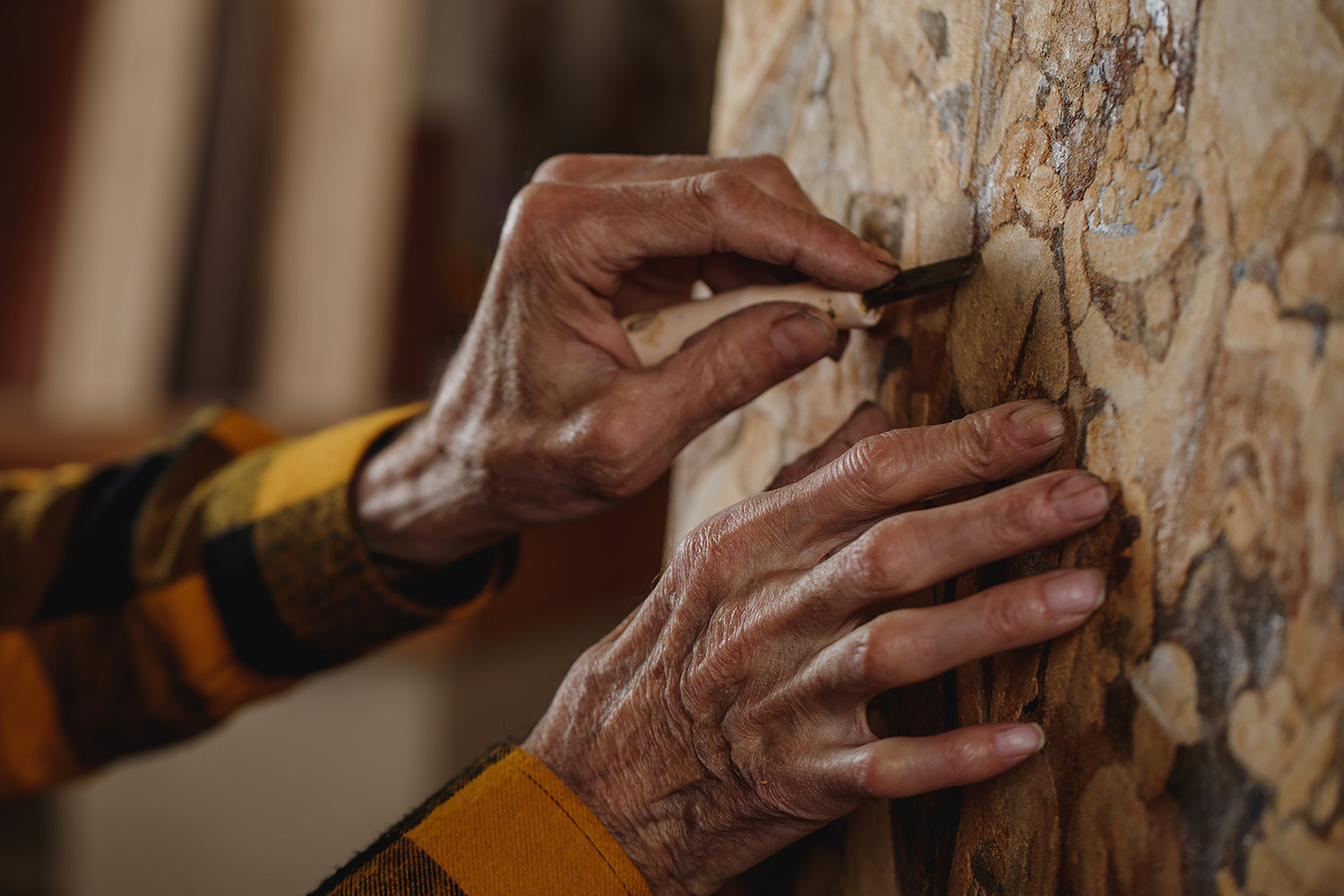
Jabrail Quliyev